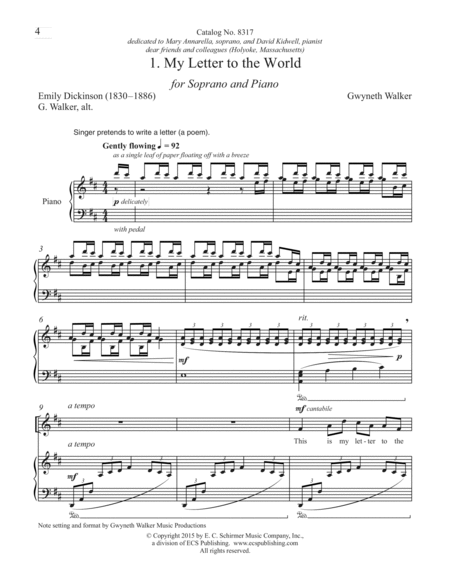Soprano voice and piano - Medium - Digital Download SKU: MQ.8317-1E Composed by Gwyneth W. Walker. Secular, 21st century. 4 pages. E. C. Schirmer Music Company - Digital #8317-1E. Published by E. C. Schirmer Music Company - Digital (MQ.8317-1E). The poetry of Emily Dickinson (1830-1886) is especially appealing due to the wide range of topics, diversity of mood and peculiar imagination of the poet. The writings are reflective, passionate, witty, sensuous, observant and ridiculously humorous. Her heart soars. Her mind pokes fun! Emily was truly a New Englander. Her poems are understated and compact. Her love of Nature focuses on small things- birds, bees, meadows and a pond. In creating the musical settings, the composer (herself a New Englander) endeavored to capture the spirit of the poetry, and of the poet, with songs diverse in style, and concise in form. Everything from romance to frogs is explored, briefly. Great delight is taken in creating musical translations of the colorful imagery: the letters floating off on the breeze (My Letter to the World). These are the poet's Letters to the World. She lived as a recluse, yet her words took flight-traveling the universe as messengers of the soul.
